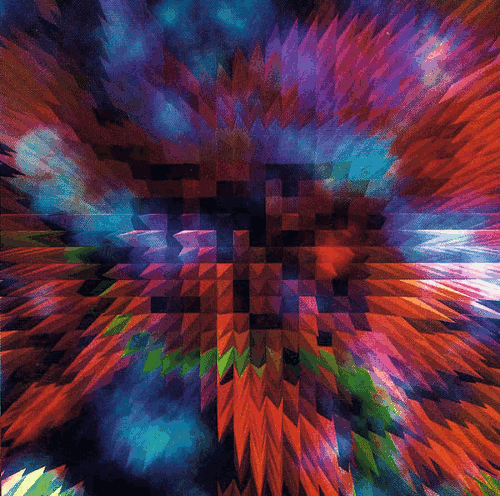 On Drifter’s Temple, Plankton Wat takes us on a vision quest through a dream of America’s West Coast. The ghosts of deadheads and time-travelling Rainbow Family gather in ancient sylvan redwood groves, playing the endless groove, while immortal orange-clad Boddhisatvas hold down the pedal note on a tambura. Emerald light slants through the distant canopy; all sense of time is lost.
On Drifter’s Temple, Plankton Wat takes us on a vision quest through a dream of America’s West Coast. The ghosts of deadheads and time-travelling Rainbow Family gather in ancient sylvan redwood groves, playing the endless groove, while immortal orange-clad Boddhisatvas hold down the pedal note on a tambura. Emerald light slants through the distant canopy; all sense of time is lost.
Plankton Wat is a good representation of the Next New Wave of West Coast Psych Warriors (NWWoWCPW), the best known examples being Barn Owl and Six Organs Of Admittance. A whole generation grown up, cutting their teeth on Gary Higgins LPs and Quiksilver Messenger Service bootlegs; a generation of bedroom auteurs, blending John Fahey‘s revenant primitivism with ’70s prog synth frippery, and a modern tendency towards looper pedals and a dusting of echo and delay. These smoky reveries are often laid straight to tape in the dead of night, while wearing pillowy headphones. These introverted transmissions are captured like a field recording, as if Alan Lomax were still stalking the dusty byways of America, visiting student housing and fuggy art spaces.
I first became aware of names like Six Organs and Vibracathedral Orchestra through the legendary Ptolemaic Terrascope, and Thurston Moore and Byron Colley‘s psychotic Bull’s Tongue ramblings for Arthur Magazine. The records were rare as uranium, and fairly reeked of incense and magick. I felt as if I had unearthed a holy grail, and these modern head records still hold a special place in my heart.The information boom of blog culture in the mid ’00s brought on a tidal wave of experimental psychedelia, from short-lived cassette labels. Names like Jack Rose, Dock Boggs, Julian Cope and Ash Ra Tempel became as common as kitchen appliances, and what was once rarefied became oversaturated. It became difficult to know which six-string headshredder to pledge allegiance to. On Drifter’s Temple, Dewey Mahood has created another kind of holy grail: the private press masterpiece.
Drifter’s Temple is entirely instrumental, but Mahood manages to say more without words than many do on their senior thesis. This record is emotional. The frantic, freewheeling arpeggios give a sense of urgency, while plaintive Middle Eastern chords give a sense of mystery, yearning and loss, and of possibility. It sounds like missing your friends, or being homesick. Several of the tracks are named after places (“Klamath At Dusk”, “Siskiyou Cavern”), and the record has the sense of a journey, travelling north from California into Oregon, as the day progresses into night. You pass outlaw mountain towns, the remnants of the gold rush, and places of wild, almost obscene beauty.
The American West Coast has always been a frontier, as far west as you can go before running back into Japan. It’s a place of hopes and dreams, and sometimes dreams crumble. There is a particular feeling of being destroyed and watching the sun extinguish in the Pacific Ocean. You might be ruined, but you are still awed by the beauty, and after all, you had to try, didn’t you?Drifter’s Temple is like a home for the homesick, a place that you can go to, and return to. It’s a hymn and a hope for fallen West Coast dreams, and it is not yet defeated.
-J Simpson-



